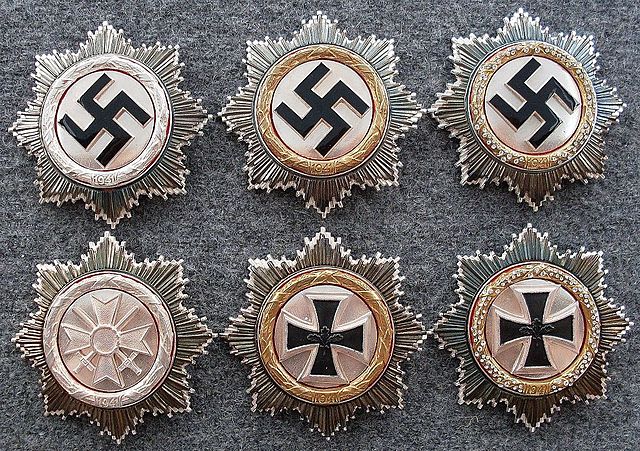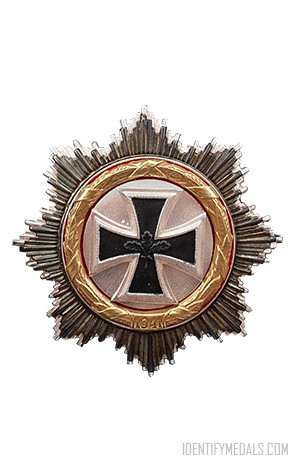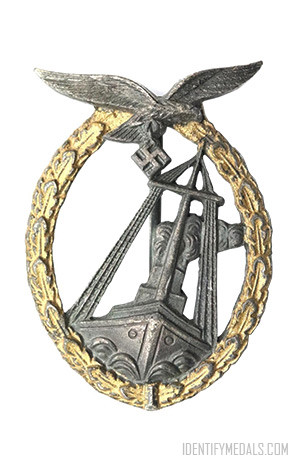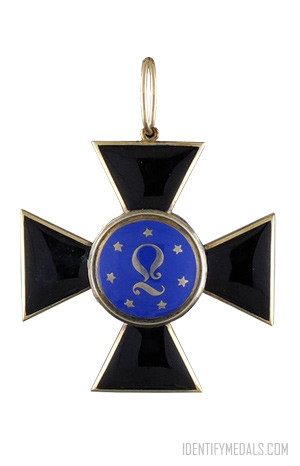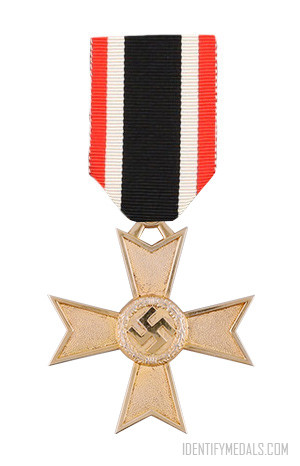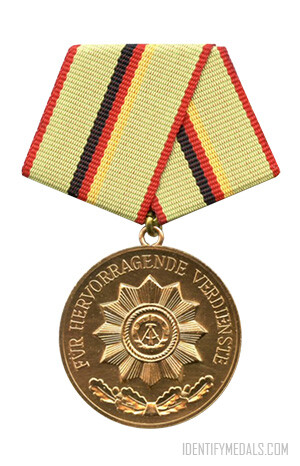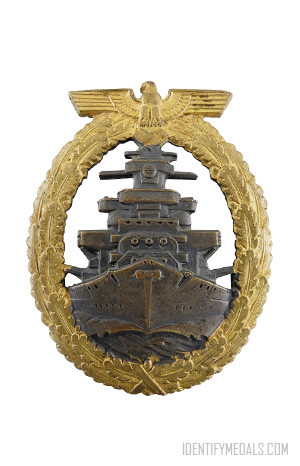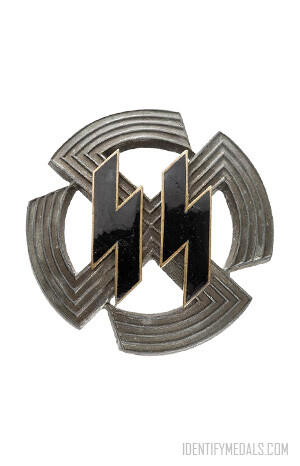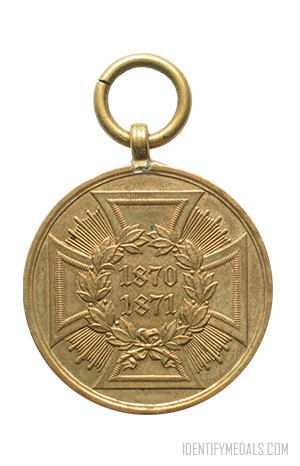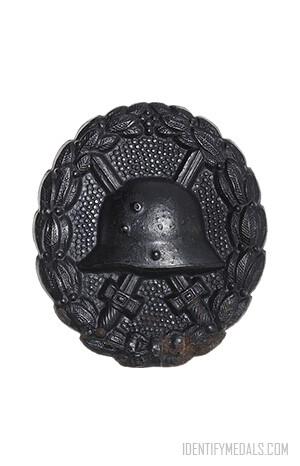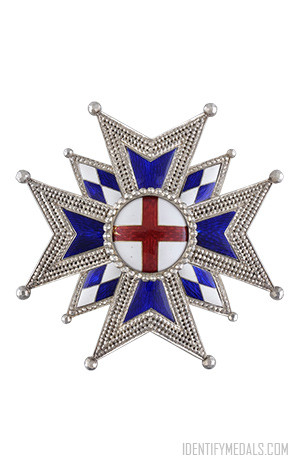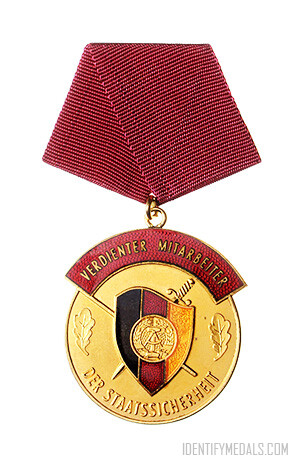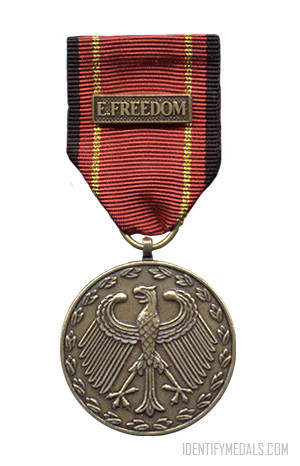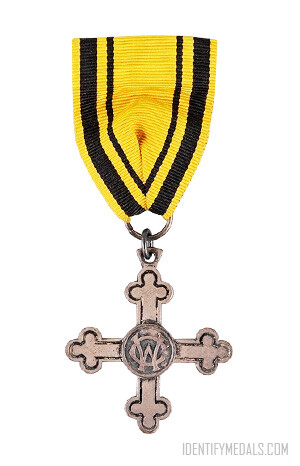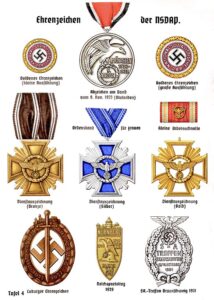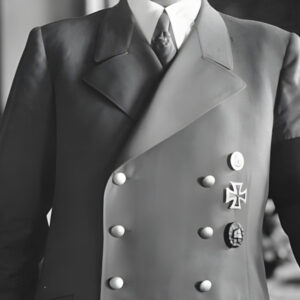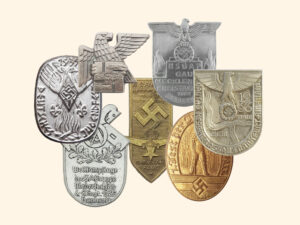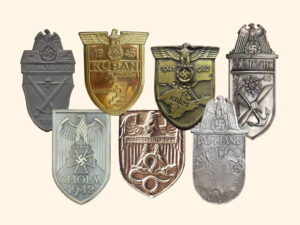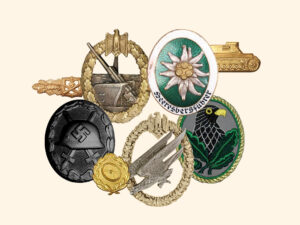The German Cross (also known as The War Order of the German Cross, or Der Kriegsorden Deutsches Kreuz in German) was instituted by Adolf Hitler on 28 September 1941 and awarded in gold and silver, depending on the division.
The German Cross in Gold (ranked higher than the Iron Cross First Class but below the Knight’s Cross of the Iron Cross) was awarded for repeated acts of bravery or achievement in combat. The German Cross in Silver, on the other hand (which ranked higher than the War Merit Cross First Class with Swords but below the Knight’s Cross of the War Merit Cross with Swords) was awarded for distinguished non-combat war service.
The German Cross Eligibility
In order to qualify for the German Cross, the recipient had to be a holder of the Iron Cross or the War Merit Cross.
Civilians were not eligible for this medal, although awards could be made to specific members of uniformed formations, such as railway workers or the police. In 1942, eligibility for the German Cross in Gold was also extended to the armed forces of allied countries.
The German Cross Design
The original order consisted of a star badge with a swastika (in German a Hakenkreuz or “hooked cross”, hence the medal’s name). In 1957, however, alternative de-nazified replacement versions of the German Cross were authorized for wear by the Federal Republic of Germany. These medals replaced the swastika with a representation of the Iron Cross for the gold division, and the War Merit Cross with Swords for the silver division.
The German Cross has a diameter of 6.5 cm and was worn on the right-hand side of the tunic. If a recipient had been awarded both the silver and gold divisions, the gold division should be worn only.
